Cleco's Story - Ice & Electricity
At the turn of the century, few could have imagined how to use a ready supply of electric power. Ice, on the other hand, made the difference between a basic existence and the good life in the South.
-
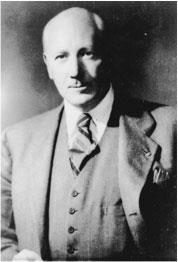
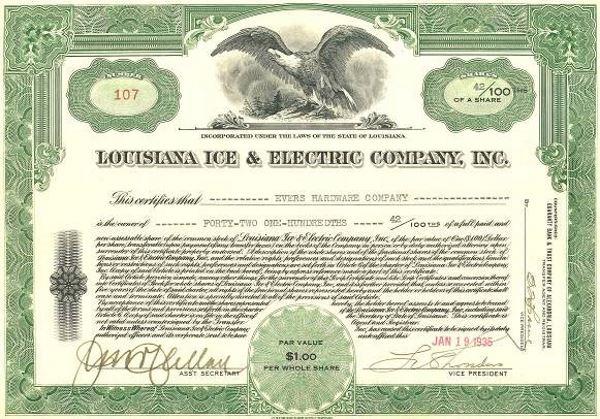
1935
- After the Great Depression, Floyd Wilson Woodcock (left), engineer and entrepreneur, reorganized Louisiana Ice & Utilities into Louisiana Ice & Electric Company, which today is Cleco Corporate Holdings LLC.
- This stock certificate (left) was issued just days after Floyd Wilson Woodcock retrieved his company from bankruptcy and renamed it Louisiana Ice & Electric Company.
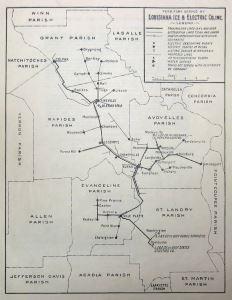
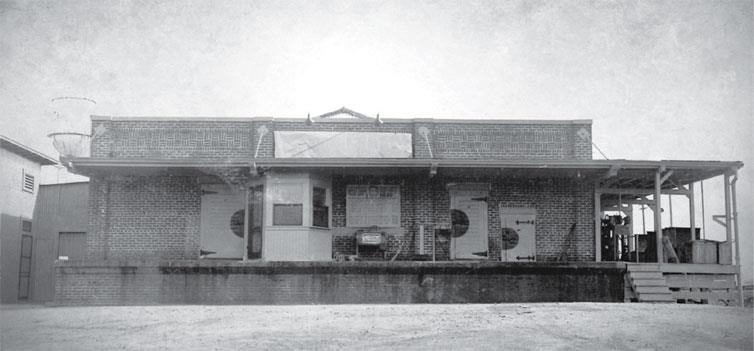
1938
- The transmission backbone through Rapides Parish is clearly visible in this 1938 map (right) of the Louisiana Ice & Electric system.
- After a long history and several ownership changes, the ice plant and cold storage facility in Bunkie (right) became part of Louisiana Ice & Electric. The company now had core ice and cold storage operations in Alexandria, Bunkie and Baton Rouge. The Baton Rouge plant was sold in 1938.
Back to Top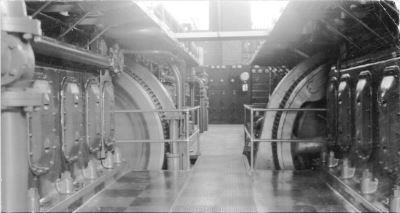
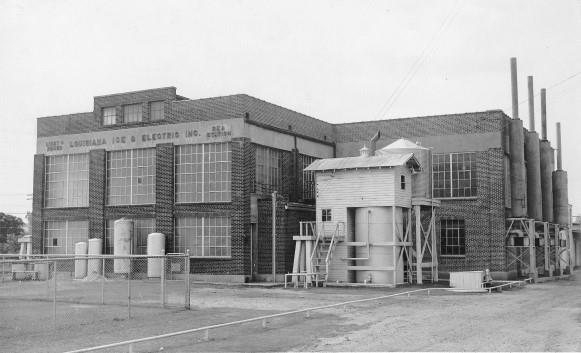
1939
- When it was built, Rea station (left) was the first major generating facility of Louisiana Ice & Electric Company and one of the largest natural-gas-burning plants in the country.
- An interior view of Rea station (far left) looks past the No. 1 and No. 2 generators toward the control panel.
-
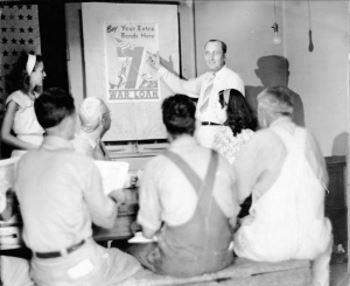
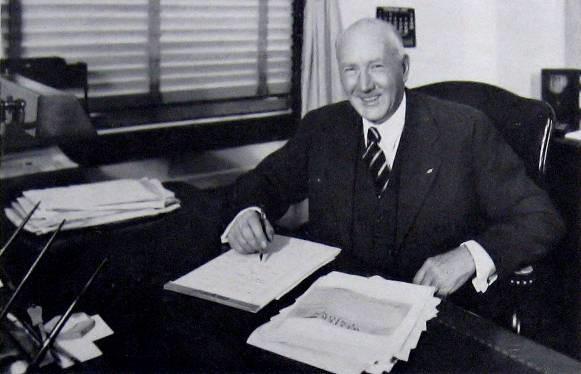
1945
- Edward J. Williams (far right) makes a presentation to employees during World War II. He was manager of the Denton, Texas, ice plant, and the company’s top salesman of war bonds.
- Energy sales to residential and commercial customers had grown to 45,000,000 kilowatt hours annually. Happy with his company’s success and realizing that electricity made the difference, Floyd Wilson Woodcock (right) announced a name change from Louisiana Ice & Electric Company to Central Louisiana Electric Company.
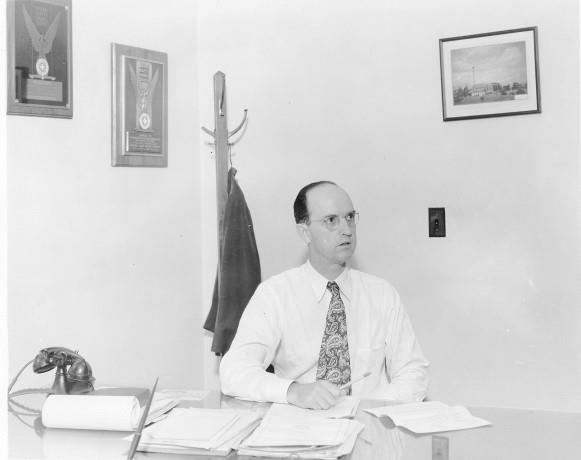
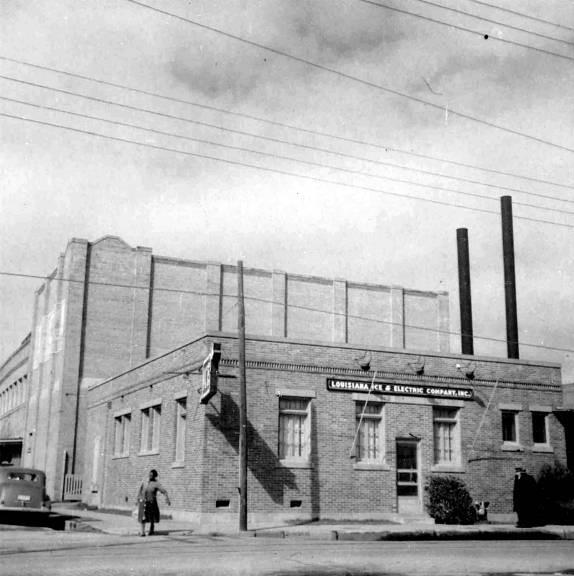
1947
- F. Hugh Coughlin, described as a "big-picture man," became president of Cleco. He put in long days and worked seven days a week at the Alexandria office.
- Coughlin had a clear vision for himself, his employees, his company and even his state. He believed that no effort should be spared to build up the economy of Louisiana.
Back to Top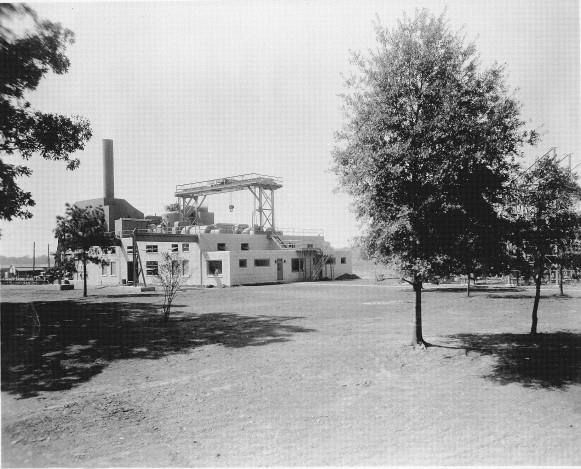
1948
- Cleco's second big power plant, Coughlin Power Station, on Bayou Cocodrie in Evangeline Parish, began commercial operation.
- F. Hugh Coughlin, who was still serving as president, set out to obtain large low-interest government loans from the Rural Electrification Administration (REA), which bankrolled not-for-profit customer-owned cooperatives. Coughlin started by forming a subsidiary, the Louisiana Rural Electric Corporation (LREC), dedicated to building rural distribution lines. In 1948, LREC landed a $400,000 REA loan, and the building began.
-
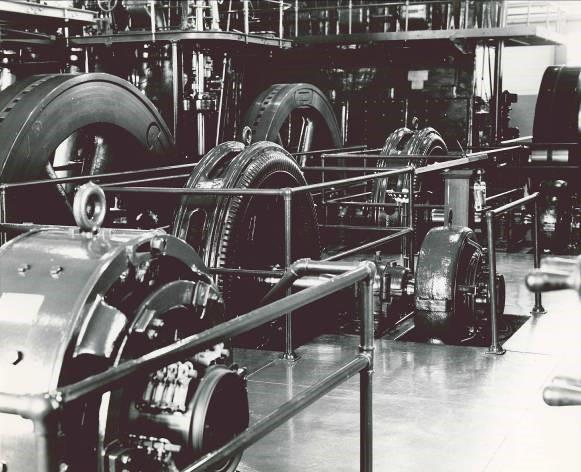
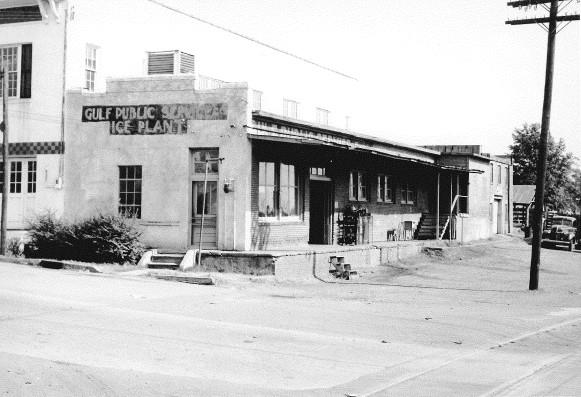
1951
- Gulf Public Service Company, based in Lafayette, became a subsidiary of Cleco. The merger more than doubled Cleco's size. Upgrading this rundown ice plant (left) was just one of the challenges Cleco acquired in the Gulf Public Service merger.
- Sparkling machinery (far left) was ready for action at the Gulf Public Service power station in Crowley.
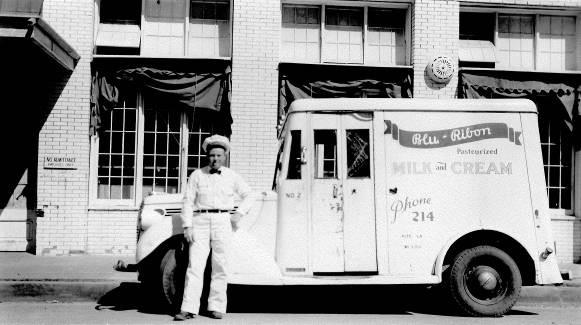
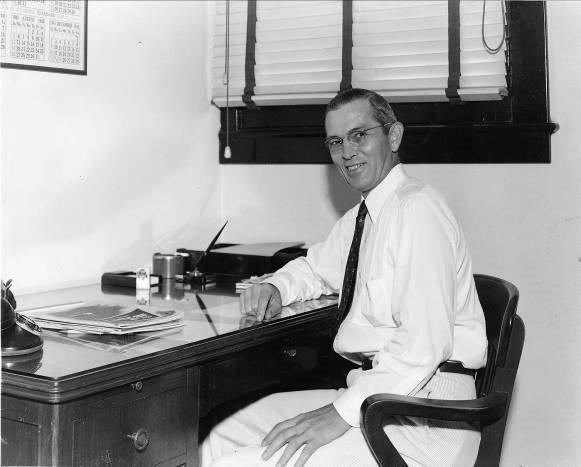
1953
- C. Ray Wilson expertly managed the Blu-Ribon Dairies under the Cleco umbrella for years before acquiring the firm outright. The divestiture of Blu-Ribon signaled Cleco’s intent to focus solely on electric power.
- By 1953, gas service accounted for 11 percent of the company's $9 million total income, and the board of directors began to consider further expansion into the gas market.
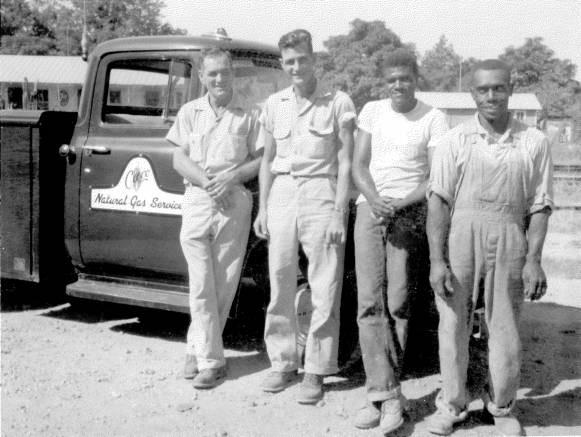
1955
- Cleco created a subsidiary, Louisiana Intrastate Gas Corporation, to acquire, construct and operate more natural gas pipelines. In this photo, a Cleco natural gas service crew is ready to respond.
- The company eventually acquired another 106 miles of pipeline and began selling gas wholesale to municipalities, large industrial customers and other distributors.
Back to Top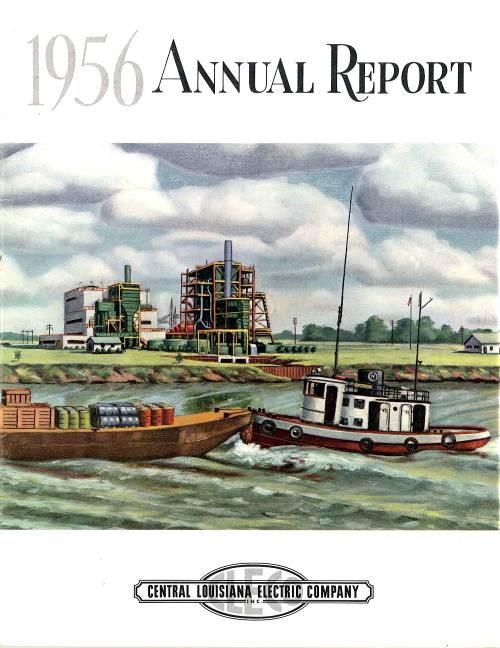
1956
- Teche Power Station was a showpiece for Cleco throughout the 1950s. This 1956 annual report illustration shows its location alongside the shipping lanes of the Charenton Canal.
- The plant enabled Cleco to be self-sufficient again for a time. By 1956, Cleco had to add another 54,000-kilowatt generator to Teche, which began commercial operation in 1953.
-
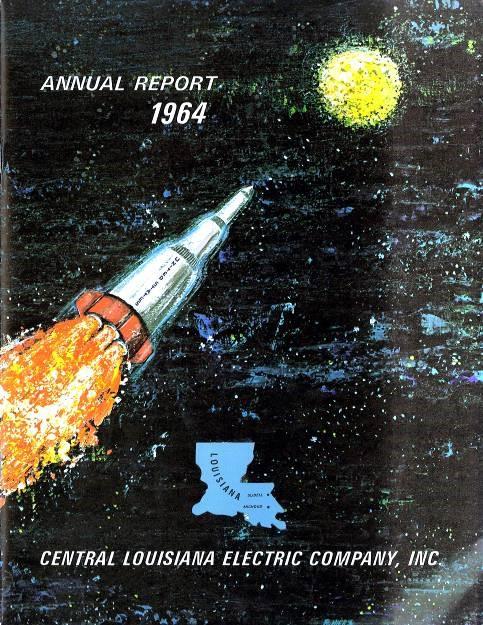
1964
- The two decades after World War II were mostly golden for American consumers and businesses.
- The 1964 Annual Report captures the Space Age optimism that Cleco shared with much of the country as the placid post World War II years came to a close.
- From 1964 to 1966, with the approval of the Louisiana Public Service Commission, the company gave $1.25 million back to its customers.
Back to Top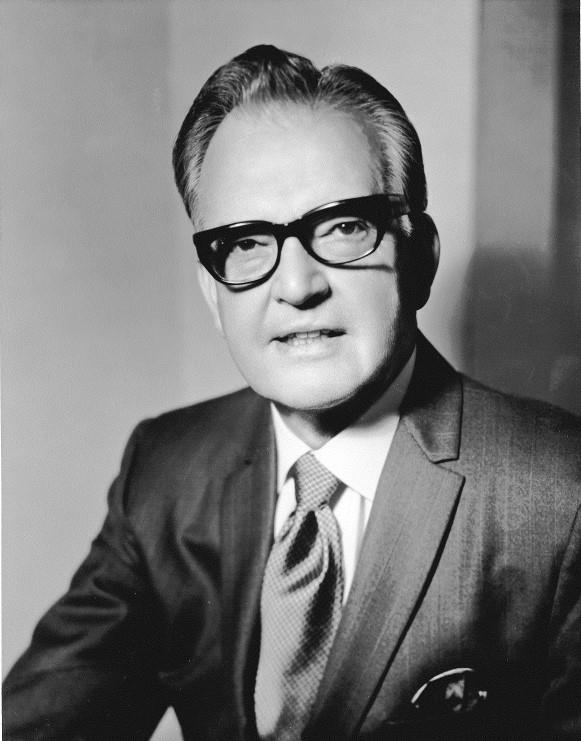
1967
- W. Donner Rodemacher became Cleco’s third president. Unlike his predecessor, he was a Louisiana native who had no ties to the old holding company days. After high school, he went to work in the finance office of a firm that eventually merged with Gulf Public Service Company and then Cleco. He presided over the expansion of Cleco's gas transmission and production business, which protected shareholder interests during periods of high inflation and high interest rates.
- By 1967, the big plants that F. Hugh Coughlin had long courted had arrived. Procter & Gamble, DuPont, Sunbeam, and the largest of them all, Boise Cascade, had all begun operations in Cleco's service area.
-
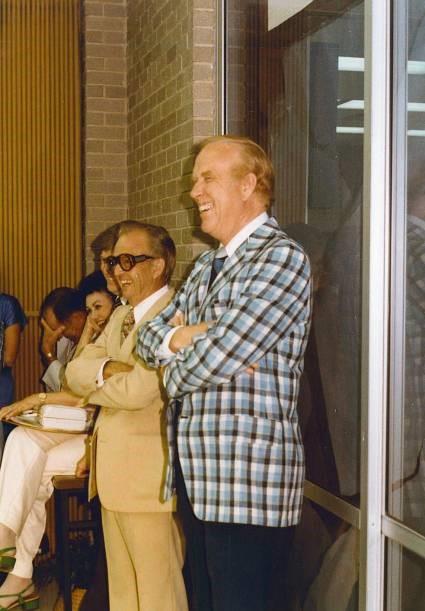

1974
- By 1974, inflation was 11 percent, industries were collapsing and many Americans were losing their jobs.
- Cleco had its own misery index, as the price of natural gas continued to increase.
- Cleco brought in an outsider, Gale L. Galloway, to help navigate the volatility of natural gas prices. In this photo, Galloway (right) shares a laugh with W. Donner Rodemacher. Galloway, an expert in the natural gas business, sorted out a financial predicament that was no laughing matter.
- Employee Joe Simms tests oil-burning equipment at Teche Power Station. During the 1970s, all of Cleco's natural gas plants were retrofitted to burn oil.
Back to Top
1975
- By 1975, natural gas was up 42 cents. Although Cleco was highly vulnerable to rising gas costs, it did have some defenses. One was a fuel adjustment clause created by the Louisiana Public Service Commission in 1975, which helped recoup the escalating cost of fuel.
- Rodemacher Unit 1 (now Nesbitt Unit 1), near Boyce, began commercial operation.
-
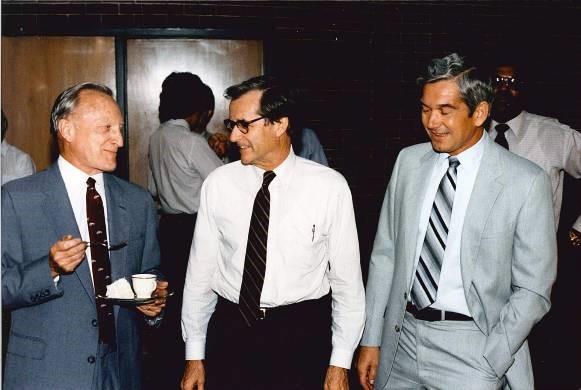
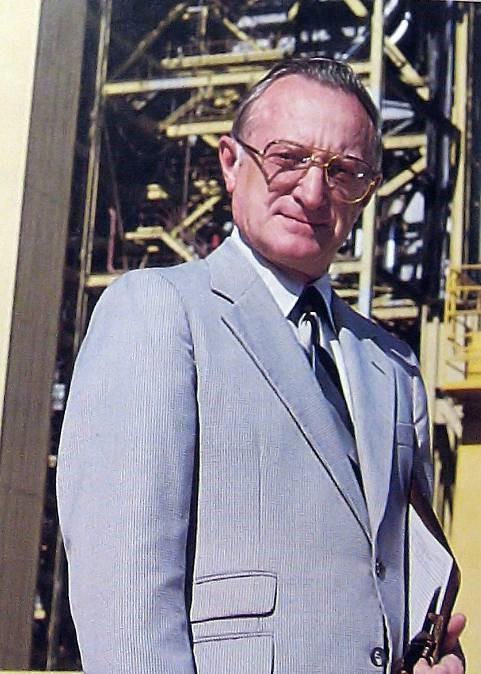
1981
- James Henderson became president and CEO. Henderson was a smart, by-the-book utilities man, and he he kept the regulated electric business steady during the tumult of the late 1970s and early 1980s. He was committed to modernizing and tightening up what he considered a "sleepy little company."
- In the second photo, leaders of the 1980s enjoy an informal moment. From left, they are James Henderson, Scott Brame and William Terbot.
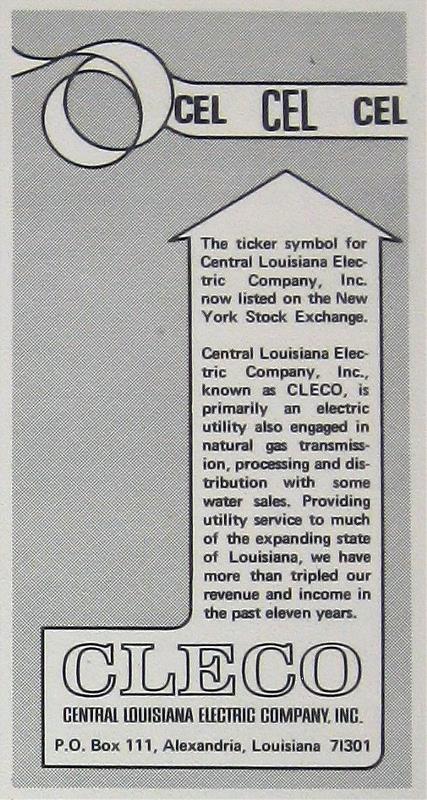
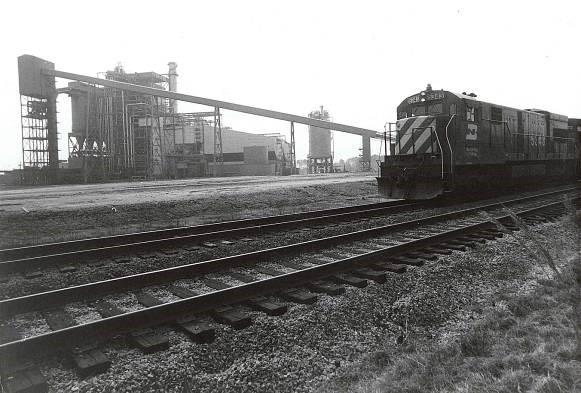
1982
- Cleco was relisted on the New York Stock Exchange the symbol CNL.
- Rodemacher Unit 2 began commercial operation. The completion of Unit 2 was Cleco’s first major response to the natural gas problem. In this photo, a railroad train arrives at the unit with a load of Wyoming soft coal.
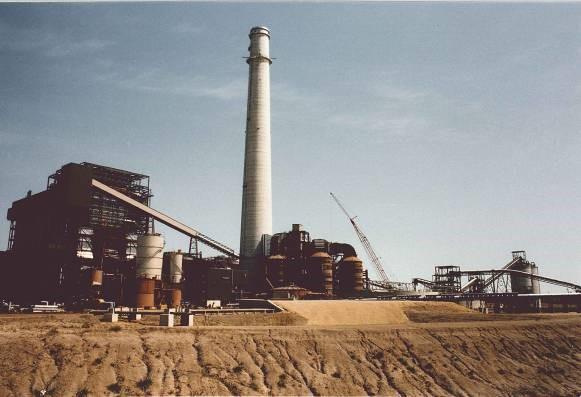
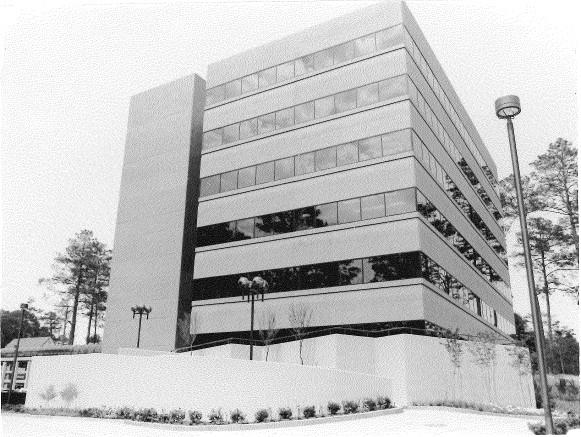
1986
- Dolet Hills Power Station, at the mouth of a lignite mine, began commercial operation. It helped break Cleco’s dependence on natural gas.
- Two parts of the company, Louisiana Ice & Electric from the north and Gulf Public Service from the south, finally came together at the office building on Donahue Ferry Road in Pineville.
Back to Top
1988
- Scott Brame took over as president and CEO. Brame stepped up the company's industrial marketing and economic development and launched a new residential initiative called the Power Miser program, which offered reduced rates to owners of energy-efficient all-electric homes.
- Throughout his presidency, Brame was concerned with keeping costs down for the company and consumers. He emphasized good relations with the Louisiana Public Service Commission, and he spoke frequently to civic clubs in the service area.
-
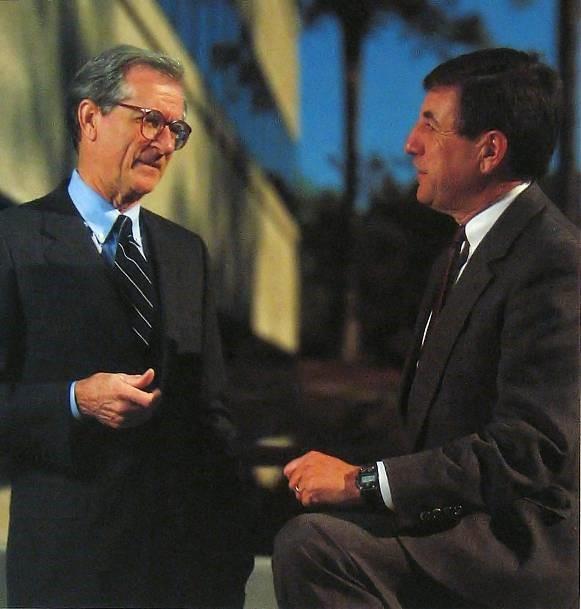

1993
- Scott Brame (left) turned over the reins to Greg Nesbitt who served as president and CEO until he retired in May 2000.
- Under Nesbitt's leadership, Cleco implemented several key initiatives that came from employee suggestions. Cleco opened a centralized 24-hour call center and consolidated its customer service offices from 25 to 10 locations.
Back to Top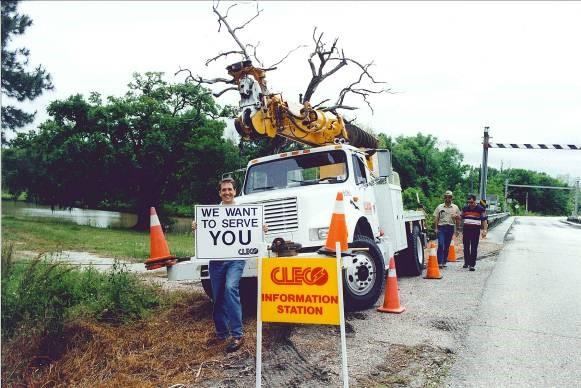
1997
- Cleco purchased Teche Electric Cooperative, one of Louisiana's old Rural Electric Administration co-ops in the southern part of the state, after making its customers an offer that they could not refuse.
- In this same year, a new Cleco was born. Five divisions were created: retail energy, distribution services, generation services, financial services and employee/corporate services. Each had its own vice president, and each had its own profit and loss responsibility.
-

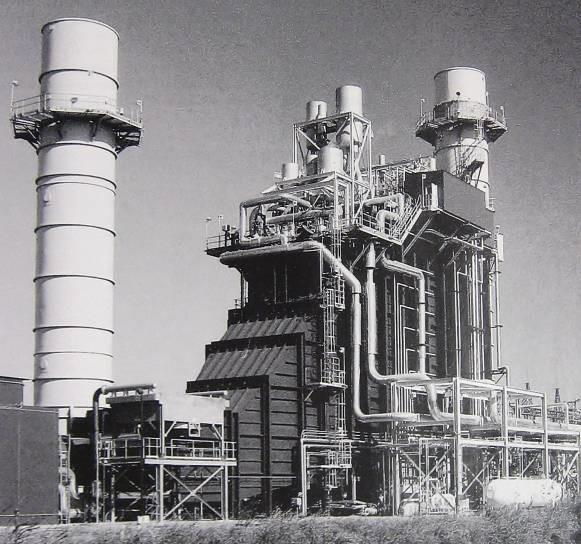
2000
- Cleco's first wholesale power plant, Evangeline Power Station (formerly Coughlin Power Station), began commercial operation.
- When protégé David Eppler (left) succeeded Greg Nesbitt as CEO, the pressures of adapting Cleco to the deregulated world were evident.
- The midstream energy market that Cleco was rushing to join was booming. Corporate earnings were up 15 percent over the year before, and Eppler was sure that it was the beginning of an era of growth for Cleco. However, he soon faced even bigger challenges than Nesbitt had.

2005
- In August 2005, Hurricane Katrina knocked out power to 86,000 customers.
- A few weeks later, in September 2005, Hurricane Rita swept through, knocking out power to 137,000 customers.
- In the largest storm restoration in Cleco's history, the company replaced more than 6,000 poles and 3,000 transformers. Line repairs and cleanup went on for weeks in the wake of back-to-back hurricanes.
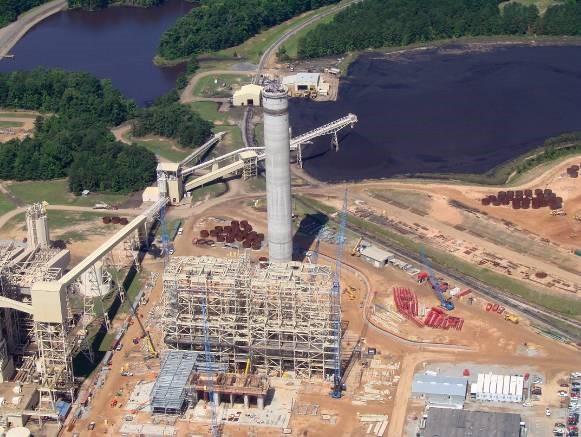
2006
- Construction began on Rodemacher Unit 3, the $1 billion, 600-megawatt generating unit with circulating fluidized-bed "clean coal" technology.
- The project had a 42-month timetable.
Back to Top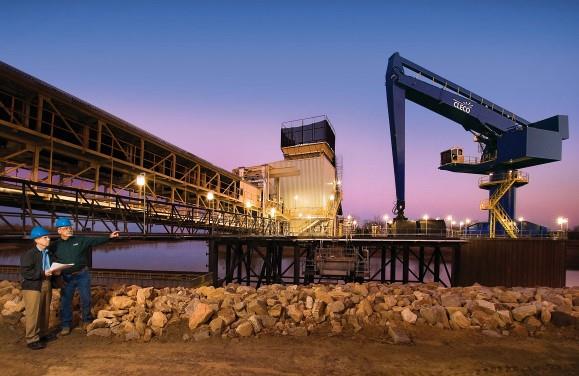
2008
- Cleco completed the fuel offloading facility for Rodemacher Unit 3, which uses petroleum coke, a byproduct of the oil refining industry, to generate electricity.
-
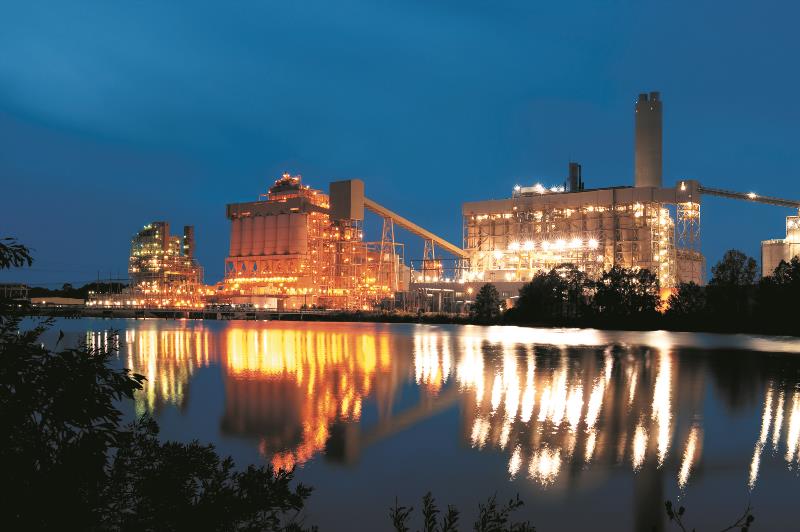
2010
- Rodemacher Unit 3 began commercial operation. The unit has since been renamed Madison Unit 3 and is the third of two existing units at the Brame Energy Center near Boyce, Louisiana.
- Cleco celebrated the company's 75th anniversary by ringing the Closing Bell at the New York Stock Exchange.
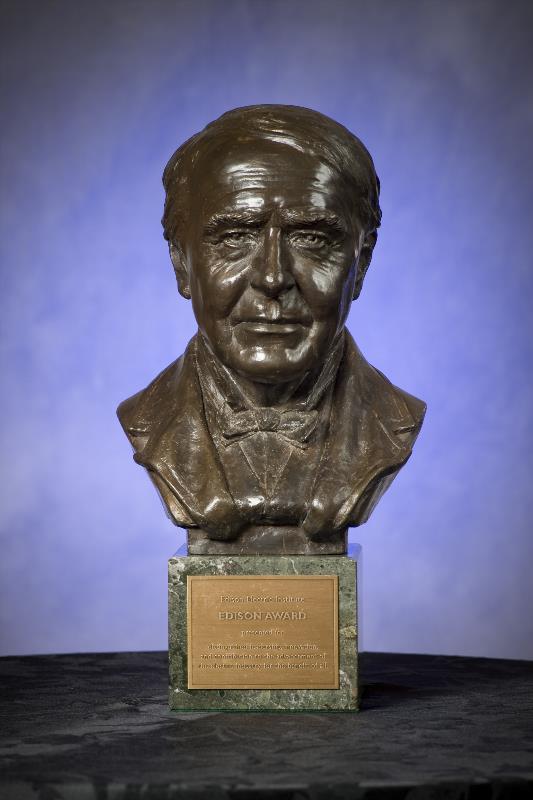
2011
- Cleco received the 84th Annual Edison Award, the utility industry's most prestigious honor, for the company's innovative approach to diversifying its generation fuel mix with the commercial operation of Madison Unit 3.
2013
- Cleco successfully integrated into the Midcontinent Independent System Operator, Inc. (MISO) market. MISO offers Cleco customers more reliable power through regional transmission planning and coordination and will create wholesale and transmission growth opportunities for the company.
2016
- The sale of Cleco to a group of North American infrastructure investors led by Macquarie Asset Management and British Columbia Investment Management Corporation, with John Hancock Financial and other infrastructure investors was completed.
- Cleco common stock was delisted from the New York Stock Exchange.
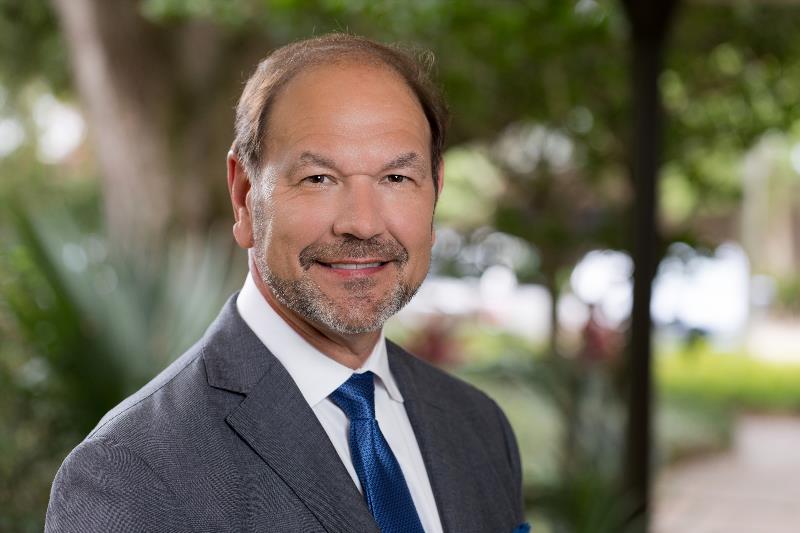
2017
- William “Bill” Fontenot who began his career with Cleco in 1986 was named president and CEO following a competitive, nationwide search.
Back to Top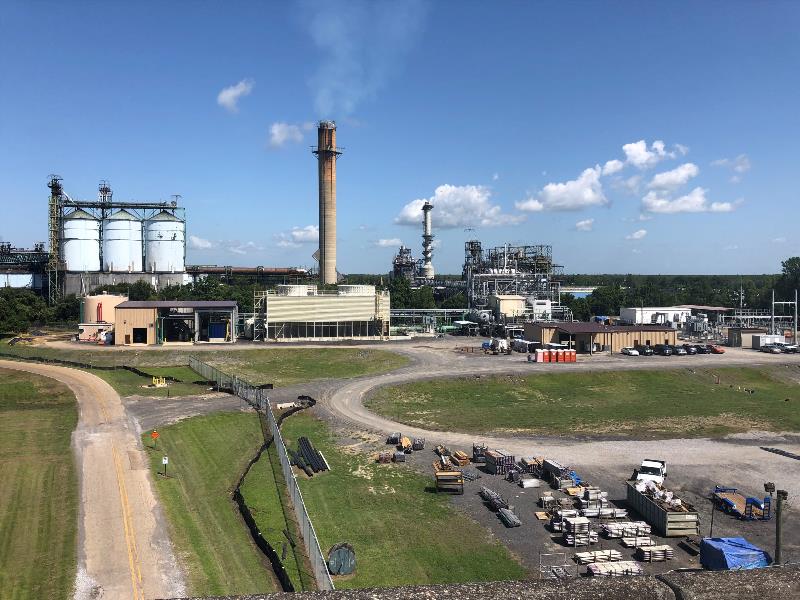
2019
- Cleco acquired NRG South Central Generating LLC, a subsidiary of NRG Energy, Inc. for $1.0 billion which is the largest acquisition in Cleco’s 85-year history. Under the terms of the agreement, Cleco Cajun LLC, an unregulated subsidiary of Cleco, acquired eight generating assets totaling 3,555 MW, transmission operations and contracts to provide wholesale power to nine Louisiana cooperatives, three wholesale municipal customers and one electric utility.
- Cleco placed into service its St. Mary Clean Energy Center in Franklin, La. which is capable of generating up to 50-megawatts of electricity without increasing emissions.
- Cleco committed $1.0 million to Central Louisiana Technical Community College to help fund training and curriculum development, as well as scholarships for students in manufacturing-related programs.
- Cleco received the 2019 Leaders in Philanthropy Corporate Award presented by the Community Foundation of Acadiana for donating nearly $1 million to charitable causes across Acadiana.
-
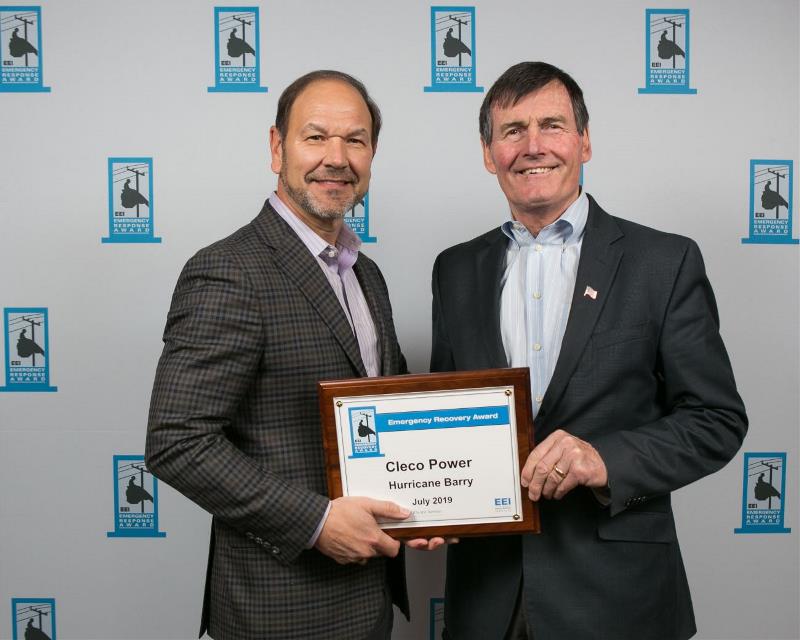
2020
- The Edison Electric Institute presented Cleco Power with an Emergency Response Award for its outstanding power restoration efforts after Hurricane Barry impacted Louisiana in July 2019.
- Cleco Power was ranked second out of 144 electric utilities nationwide for its communication and response to the COVID-19 pandemic by J.D. Power in its second-quarter 2020 Electricity Utility Residential Customer Satisfaction Study.
- Cleco Power began the largest restoration effort in the company’s history after Hurricane Laura, a Category 4 storm, left approximately 140,000 customers without power and caused extensive distribution and transmission damage to Cleco’s system. Hurricane Laura was the most powerful storm to hit Louisiana since 1856.
- Just as the company was wrapping up restoration efforts from Hurricane Laura, Hurricane Delta made landfall and left approximately 125,000 Cleco customers without power.
- Approximately two weeks after Hurricane Delta made landfall, Hurricane Zeta impacted the southeast region of Cleco’s service territory, leaving over 70,000 Cleco customers without power.
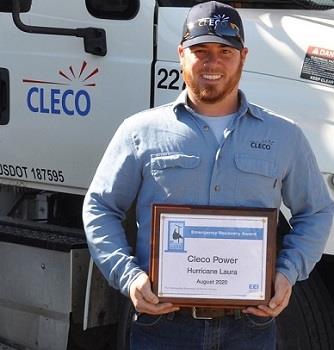
2021
- The Edison Electric Institute presented Cleco Power with an Emergency Response Award for its response to Hurricane Laura.
- The Edison Electric Institute presented Cleco Power with an Emergency Response Award for its efforts to restore power following Hurricanes Delta and Zeta in October 2020.
- Cleco restores power to over 100,000 customers after Hurricane Ida made landfall in southeast Louisiana as a Category 4 storm.

2022
- The Edison Electric Institute presented Cleco Power with an Emergency Response Award for its power restoration efforts after Hurricane Ida in August 2021.
- Cleco Power and D.E. Shaw Renewable Investments announced a long-term renewable energy off-take agreement to include a 240 MWac solar facility to be constructed at Cleco’s recently retired Dolet Hills lignite-fired power plant in DeSoto Parish.

2023
Cleco ranked number one in the Southeast Electric Exchange’s Safety Performance Report in the following categories: Year-end Total Company, Year-end Transmission and Distribution Personnel, Year-end Fossil and Hydro Generation Personnel, and Year-end Support and Corporate Personnel.
2024
On June 1, Cleco finalized the sale of its Cleco Cajun generating assets and wholesale cooperative contracts to Big Pelican LLC and Pelican South Central, affiliates of Atlas Capital Resources IV LP.
Back to Top
2025
Cleco is celebrating 90 years of service. The company’s transformation from an ice and cold storage company to a leading energy provider is a testament to its adaptability, commitment to customers and ability to navigate shifts in the electric utilities industry. Over the years, Cleco has become a major player in the utilities industry and a key economic driver for the state.
For a more thorough accounting of Cleco's rich history, download
Lighting Louisiana for 75 Years.
Copyright 2010, Cleco Corporation. All Rights Reserved. Written by: Kenneth Durr, History Associates Incorporated.